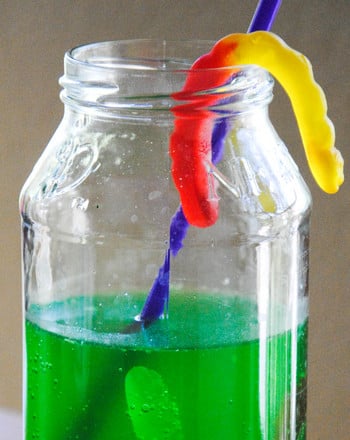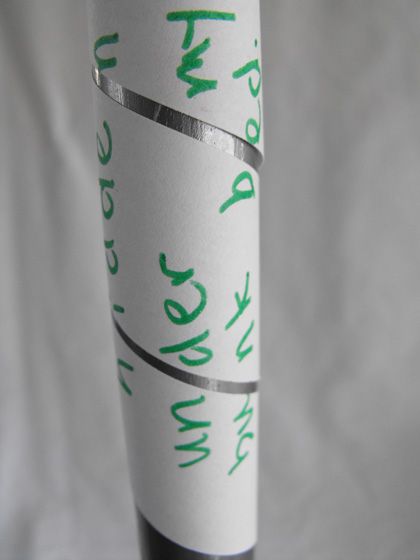Science project
Teaching Worms
Grade Level: 5th - 8th; Type: Biology
Objective:
To find out whether a worm can learn to navigate a simple maze
The purpose of this experiment is to attempt to train a worm to complete a simple maze in order to find out if worms can learn and remember.
Research Questions:
- Does a worm have a well-developed central nervous system?
- Does it appear that a worm is capable of learning, given the types of structures that exist in its brain?
- What sensory organs do worms have?
- How do animals such as mice learn how to navigate a maze?
Having an animal run through a maze has long been used as a test to see how well the animal learns. Mice and rats are often taught mazes and quickly learn which series of paths leads to the food reward at the end. As mammals, mice and rats both have a high capacity to learn new things. An earthworm has considerably less brainpower than a mouse and of course could not be expected to remember the complex skills that mice can be taught. This experiment seeks to find out whether an earthworm can learn the layout of a simple maze, improving the time it takes the worm to journey from the beginning of the maze to the apple slices at the end.
Materials:
- A small plastic container with air holes
- Dirt
- Apple slices
- A red light bulb
- A plastic bin
- Cardboard
- Tin Foil
- Scissors
- Glue or Tape
- A simple maze: The inside of a 2’ by 2’ plastic bin works well for a frame. Maze walls can be made of cardboard and wrapped in tinfoil. (Your maze will get wet so exposed cardboard is not a good option.
- Water
- A worm
- A spray bottle
- A clock or timer
Experimental Procedure:
-
Use a simple design, such as the one below, for your maze.
-
Cut out cardboard pieces that will fit in your container.
-
Wrap each of the pieces in a waterproof material, such as tinfoil.
-
Assemble the pieces in the container.
-
Connect the pieces using tape or glue.
-
Fill the bottom of the container with a couple inches of dirt. This is for the worm to move on, not through.
-
Fill a small container with wet dirt (not so wet that it is mud).
-
Poke air holes in the container. Make sure they are small enough that the worm will not escape through them.
-
Dig a hole outside until you find an earthworm.
-
Place the earthworm in the small container and leave it there for about a day.
-
The next day, wet the dirt in the maze. You want it to be damp to the touch but not so wet that it is mud.
-
Place the maze in a dark room.
-
Place an apple slice at the end of the maze.
-
Place the worm at the beginning of the maze.
-
Take note of the time.
-
Use the red light to watch the progress of the worm. Worms do not like light and a red light will not stress a worm as much as a white light or daylight will.
-
Observe the worm’s progress.
-
Worms need to stay damp. If your worm looks like its drying out, a couple of sprays with the spray bottle should help. Do not overdo it though as this will scare the worm and may affect its ability to complete the maze.
-
Allow the worm to try to find the apple on its own. If it does not, place the worm back it its container and give it the apple slice to eat.
-
Take the apple slice out of the container 12 hours before performing the next trial.
-
The following day, repeat steps 11-20. Repeat this experiment over the course of a few weeks to find out whether the worm’s time improves. Use a chart such as the one below to keep track.
-
(optional) Try the experiment with a couple different worms. House them in separate containers so you don’t get them confused.
-
Don’t forget to let your worms go in the garden at the end of the experiment!
|
Day
|
Time
|
|
1
|
|
|
2
|
|
|
3
|
|
|
4
|
|
|
5
|
|
|
6
|
|
|
7
|
|
Sample maze (easy enough for a worm!)
Terms/Concepts: Learning; Memorization; Animal Intelligence; Brain structure; Worm brain; Worm sensory organs
References:
Education.com provides the Science Fair Project Ideas for informational purposes only. Education.com does not make any guarantee or representation regarding the Science Fair Project Ideas and is not responsible or liable for any loss or damage, directly or indirectly, caused by your use of such information. By accessing the Science Fair Project Ideas, you waive and renounce any claims against Education.com that arise thereof. In addition, your access to Education.com's website and Science Fair Project Ideas is covered by Education.com's Privacy Policy and site Terms of Use, which include limitations on Education.com's liability.
Warning is hereby given that not all Project Ideas are appropriate for all individuals or in all circumstances. Implementation of any Science Project Idea should be undertaken only in appropriate settings and with appropriate parental or other supervision. Reading and following the safety precautions of all materials used in a project is the sole responsibility of each individual. For further information, consult your state's handbook of Science Safety.













